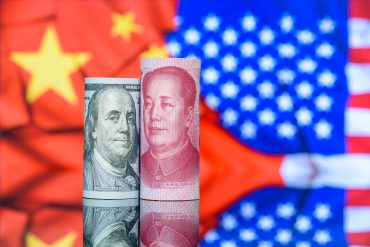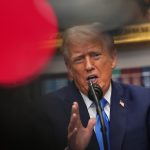

High-Stakes London Summit Tests US-China Economic Relations as Global Markets React to Tech and Tariff Disputes
Three Key Facts
- Wall Street’s S&P 500 broke above the 6,000 mark for the first time since February 21, driven by robust May payroll data
- The US and China have entered critical trade negotiations in London following a 90-day tariff suspension that expires August 12
- The UK secured the highest level of foreign direct investment in Europe last year despite a broader decline in M&A activity across the continent
Introduction
Global markets sit on edge as high-stakes trade negotiations between the United States and China commence in London, marking a pivotal moment for the world’s two largest economies. The talks arrive amid heightened market volatility, with U.S. stock futures showing mixed signals and investors adopting a cautious stance ahead of critical economic data releases this week.
These negotiations carry extraordinary significance for global economic stability. The outcome could determine whether the recent 90-day tariff suspension continues or whether trade tensions escalate once again. Markets have responded with measured optimism, though underlying concerns about civil unrest in Los Angeles and ongoing geopolitical tensions continue to weigh on investor sentiment.
Key Developments
Top-level officials from both nations have gathered in London to address the escalating trade conflict. U.S. Treasury Secretary Scott Bessent, Commerce Secretary Howard Lutnick, and Trade Representative Jamieson Greer represent American interests, while Chinese Vice Premier He Lifeng leads the delegation from Beijing.
The negotiations follow a preliminary agreement reached in Geneva that suspended tariff escalations until August 12. However, several critical disputes have emerged since the May truce that directly threaten the fragile peace between the economic superpowers.
Semiconductor tensions have reached a boiling point after the US Commerce Department issued guidance suggesting Huawei’s Ascend AI chips potentially violate export controls. This development carries significant implications for the global semiconductor supply chain and technology transfer restrictions.
China’s export controls on seven rare earth elements have created manufacturing shortages, particularly affecting automakers and industries dependent on these critical minerals. The battle for control over AI chip design and manufacturing has intensified, creating both challenges and opportunities across the technology sector.
Market Impact
Financial markets reflect this uncertainty with mixed signals across major indices. Dow Jones Futures increased modestly by 13 points, while S&P 500 Futures remained largely unchanged and Nasdaq 100 Futures dropped 24 points.
The technology sector stands at the center of these trade tensions, with semiconductors, rare earth elements, and AI capabilities becoming geopolitical chess pieces. Companies with diversified supply chains and limited exposure to China-specific regulatory risks appear better positioned to weather potential disruptions.
Oil markets have shown resilience, with Brent futures rising 0.2% to $66.58 per barrel and West Texas Intermediate crude gaining 0.2% to $64.70. Both benchmarks posted significant weekly gains, with Brent rising 4% and WTI surging more than 6% in their first weekly advance in three weeks.
Strategic Insights
The current environment creates a delicate balance between optimism and caution. While economic indicators remain relatively strong, evidenced by Friday’s positive jobs report, unresolved trade issues generate significant uncertainty for investors and businesses alike.
Apple’s Worldwide Developers Conference takes place today amid this backdrop of uncertainty. The tech giant faces scrutiny as it outlines its strategy during a protracted decline in share price. Reports suggest significant changes for iOS 26, including improvements to the AI-enhanced Apple Intelligence service.
The timing of these negotiations coincides with expectations of rising inflation, with economists anticipating annual inflation to increase to 2.5% from April’s 2.3%. This projection stems from higher electricity prices and the impact of trade tariffs on consumer goods.
Expert Opinions and Data
Market analysts emphasize the importance of these London discussions for near-term market direction. Investing.com reports that Wall Street’s recent breakthrough above the 6,000 mark represents a significant psychological milestone for investors.
Industry experts note that China’s export growth fell to a three-month low in May due to the impact of U.S. tariffs, demonstrating the real economic consequences of the ongoing trade dispute. This data underscores the urgency behind current diplomatic efforts to resolve outstanding issues.
EY’s recent analysis reveals that the UK continues to attract substantial foreign investment, primarily in technology and renewable energy sectors. This investment flow remains crucial to Britain’s post-Brexit economic strategy, even as broader European M&A activity faces significant headwinds.
Political uncertainties, inflation pressures, and rising interest rates have contributed to a cautious approach among European investors. However, robust financial services continue to make the UK a focal point for foreign capital, contrasting sharply with struggles faced by other European markets.
Summary
The convergence of critical trade negotiations, mixed market signals, and upcoming economic data releases creates a complex landscape for investors. Technology stocks face particular scrutiny as semiconductor tensions and AI competition remain central to U.S.-China disputes.
Market participants must navigate this environment while acknowledging both opportunities and risks inherent in the current geopolitical climate. The outcome of London talks will likely determine whether recent market gains can be sustained or whether increased volatility lies ahead for global financial markets.








